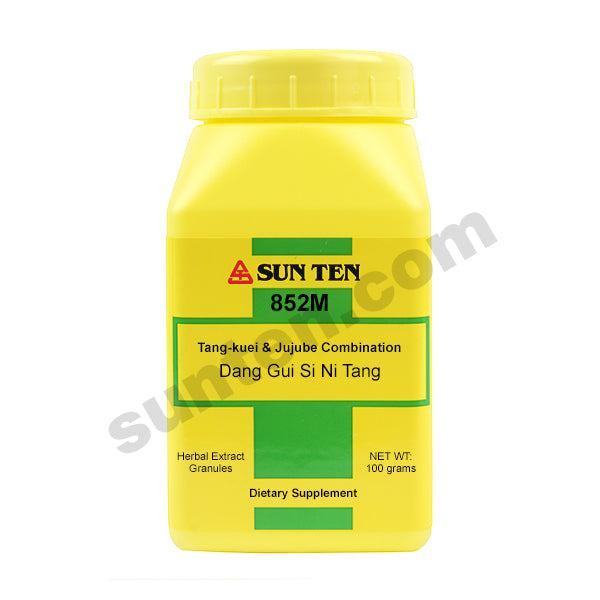Dang Gui Si Ni Tang (Bian Fang)
Tang-kuei & Jujube Combination Granules | 當歸四逆湯 (變方)
Practitioners: Please LOGIN to view the wholesale price. This item can only be purchased by a licensed practitioner. Find a practitioner
Ingredients: Tang-kuei root (dang gui), Cinnamon twig (gui zhi), Jujube fruit (da zao), White peony root (bai shao), Cinnamon bark (gui pi), Tetrapanax (tong cao), Chinese licorice root (gan cao).
| Mandarin: 當歸四逆湯 (變方) Pin-Yin: Dang Gui Si Ni Tang (Bian Fang) English: Tang-kuei & Jujube Combination Romaji: Toki Shigyaku To Kanji: 当帰四逆湯 Kampo: No |

